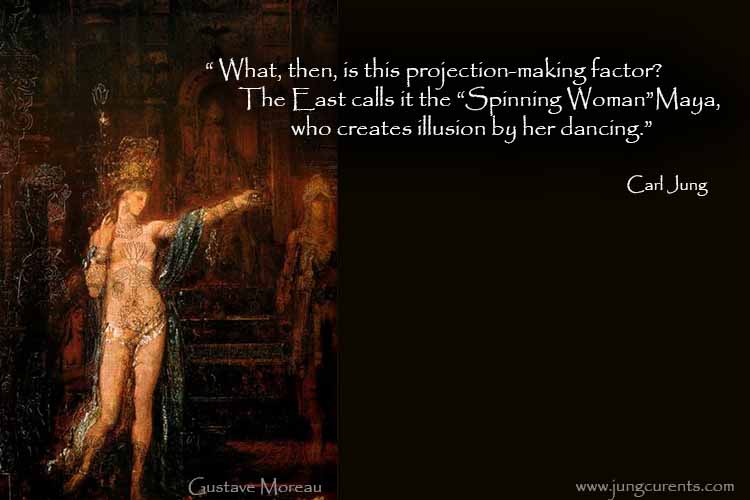Carl Jung: “What, then, is this projection-making factor? The East calls it the “Spinning Woman” Maya …”
Gustave Moreau: Salome Dancing before Herod (detail)
Carl Jung talks about the projection making factor behind the anima…
What, then, is this projection-making factor? The East calls it the “Spinning Woman” Maya, who creates illusion by her dancing. Had we not long since known it from the symbolism of dreams, this hint from the Orient would put us on the right track: the enveloping, embracing, and devouring element points unmistakably to the mother, that is, to the son’s relation to the real mother, to her imago, and to the woman who is to become a mother for him.
His Eros is passive like a child’s; he hopes to be caught, sucked in, enveloped, and devoured. He seeks, as it were, the protecting, nourishing, charmed circle of the mother, the condition of the infant released from every care, in which the outside world bends over him and even forces happiness upon him. No wonder the real world vanishes from sight!
If this situation is dramatized, as the unconscious usually dramatizes it, then there appears before you on the psychological stage a man living regressively, seeking his childhood and his mother, fleeing from a cold cruel world which denies him understanding.
Collected Works 9.2
Paragraphs 19 -20
From Wikipedia: Maya (illusion)
Maya (Sanskrit: māyā) literally “illusion”, “magic”, has multiple meanings in Indian philosophires depending on the context.
In ancient Vedic literature, Māyā literally implies extraordinary power and wisdom.
In later Vedic texts and modern literature dedicated to Indian traditions, Māyā connotes a “magic show, an illusion where things appear to be present but are not what they seem”.
Māyā is also a spiritual concept connoting “that which exists, but is constantly changing and thus is spiritually unreal”, and the “power or the principle that conceals the true character of spiritual reality”.

